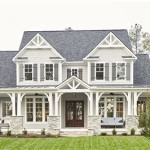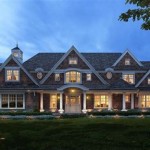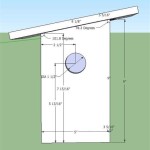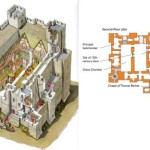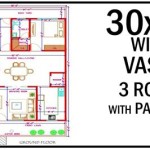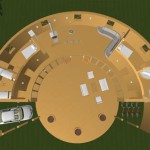House Plan Walkout Basement Front: Maximizing Views and Functionality
A walkout basement, also known as a daylight basement, is a basement design that is partially above ground, allowing for natural light and direct access to the outdoors. When situated at the front of the house, it presents unique design opportunities and challenges. This article explores the key considerations for incorporating a front-facing walkout basement into a house plan.
One primary advantage of a front-facing walkout basement is the potential for maximizing views. If the house is located on a sloped lot facing a desirable vista, positioning the walkout basement at the front allows for unobstructed views from the lower level. This can significantly enhance the perceived value and livability of the basement space.
Functionality is another key benefit. A front-facing walkout basement provides convenient access to the front yard and street. This can be particularly advantageous for creating independent living spaces, such as in-law suites or rental apartments, as it offers a separate entrance without requiring access through the main house. It can also simplify the process of moving large items in and out of the basement.
However, designing a front-facing walkout basement requires careful consideration of the site's topography and orientation. The slope of the land must be sufficient to allow for a portion of the basement to be above ground while maintaining a reasonable grade for the front yard. A steep slope might necessitate extensive excavation and retaining walls, adding to the construction cost.
Privacy is also a critical consideration. Because the walkout basement is exposed at the front of the house, maintaining privacy from the street and neighbors becomes more challenging. Strategic landscaping, such as berms, shrubs, and trees, can help create a natural privacy screen. Window placement and the use of window coverings are also important factors to consider.
The design of the front facade requires careful attention when incorporating a walkout basement. The exposed basement walls should be aesthetically integrated with the rest of the house. Materials and finishes should complement the upper levels to create a cohesive and visually appealing design. Consider using architectural details such as decorative retaining walls, planters, and lighting to enhance the curb appeal.
Natural light is a major advantage of walkout basements. Maximizing natural light penetration into the basement space is essential for creating a bright and inviting atmosphere. Large windows and strategically placed doors can help achieve this. Consider incorporating light wells or other architectural features to further enhance natural light distribution within the basement.
Drainage is a crucial aspect of any basement design, especially for walkout basements. Proper drainage systems must be implemented to prevent water from entering the basement. This includes ensuring proper grading around the foundation, installing drainage tiles, and incorporating sump pumps if necessary. Consulting with a qualified drainage specialist is recommended to ensure effective water management.
Accessibility is another factor to consider. The entrance to the walkout basement should be easily accessible from the front yard. Consider incorporating a stairway, ramp, or other accessibility features to accommodate individuals with mobility limitations. The pathway leading to the entrance should be well-lit and free of obstacles.
Local building codes and regulations should be carefully reviewed before embarking on a house plan with a front-facing walkout basement. These regulations may dictate specific requirements for setbacks, grading, drainage, and foundation design. Obtaining the necessary permits and approvals is essential before commencing construction.
Ventilation is important for maintaining healthy air quality within the basement. Adequate ventilation can help prevent moisture buildup, which can lead to mold and mildew growth. Incorporating operable windows, exhaust fans, and other ventilation systems can help ensure proper air circulation.
Insulation is also a key consideration for walkout basements. Proper insulation can help regulate temperature and reduce energy costs. Insulating the basement walls and floor can help prevent heat loss during the winter and keep the space cool during the summer.
The choice of flooring materials for a walkout basement requires careful consideration. Given the potential for moisture, materials that are resistant to moisture damage are recommended. Options include concrete, tile, vinyl, and engineered hardwood. Avoid using solid hardwood flooring in walkout basements due to its susceptibility to moisture.
Finally, the overall design of the house plan should take into account the presence of the front-facing walkout basement. The layout of the upper levels should complement the basement design, creating a cohesive and functional living space. Careful planning and consideration of all these factors can result in a successful and attractive house plan incorporating a front-facing walkout basement.

House Plan 4 Bedrooms 3 Bathrooms 2939 V1 Drummond Plans

Mountain Mid Century Cottage Bedroom Downstairs With Walk Out Basement Cathedral Ceiling 7342

Sloped Lot House Plans Walkout Basement Drummond

Walkout Basement Craftsman Style House Plan 8752 Plans

Houses With Walkout Basement House Plans Dream Home Design Exterior

House Plans With Walkout Basements Houseplans Com

Modern Farmhouse Plan W Walkout Basement Drummond House Plans

Hawthorn Cottage Walkout Basement Lake Land Studio

Dream Lake House Plans With Walkout Basement

House Plans For A Sloped Lot Dfd Blog

